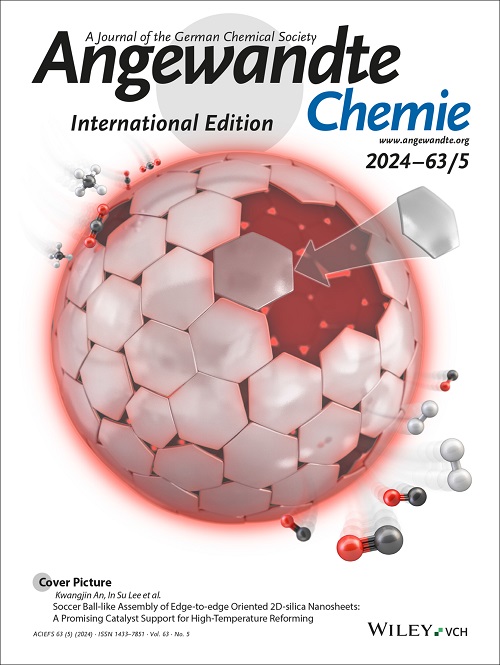Revealing Transition State Stabilization in Organocatalytic Ring-Opening Polymerization Using Data Science
IF 16.1
1区 化学
Q1 CHEMISTRY, MULTIDISCIPLINARY
引用次数: 0
Abstract
In nature, enzymes leverage constituent amino acid residues to create catalytically active sites to effect high reactivity and selectivity. Multicomponent host−guest assemblies have been exploited to mimic enzymatic microenvironments by preorganizing a network of noncovalent interactions. While organocatalysts such as thioureas have gained widespread success in organic transformation and controlled polymerization, evaluation of the participating structural features in the transition state (TS) remains challenging. Herein, we report the use of data science tools, i.e., a decision-tree-based machine-learning algorithm and Shapley additive explanations (SHAP) analysis, to model reactivity and regioselectivity in a thiourea-catalyzed ring-opening polymerization of 1,2-dithiolanes. Variation of aryl substituent position and electronic characteristics reveals key catalyst features involved in the TS. The analysis of feature importance helps explain the reason behind the optimal performance of (pseudo)halogen-substituted catalysts. Furthermore, the structural basis for the unveiled reactivity-regioselectivity trade-off in the catalysis are established.用数据科学揭示有机催化开环聚合过渡态稳定性
在自然界中,酶利用组成氨基酸残基来产生催化活性位点,以实现高反应性和选择性。通过预先组织非共价相互作用网络,利用多组分宿主-客体组装来模拟酶微环境。虽然硫脲等有机催化剂在有机转化和可控聚合方面取得了广泛的成功,但对过渡态(TS)中参与的结构特征的评估仍然具有挑战性。在此,我们报告了使用数据科学工具,即基于决策树的机器学习算法和Shapley加性解释(SHAP)分析,来模拟硫脲催化的1,2-二硫代烷开环聚合的反应性和区域选择性。芳基取代基位置和电子特征的变化揭示了TS中涉及的关键催化剂特征,特征重要性的分析有助于解释(伪)卤素取代催化剂性能最佳的原因。此外,还建立了催化过程中反应性与区域选择性权衡的结构基础。
本文章由计算机程序翻译,如有差异,请以英文原文为准。
求助全文
约1分钟内获得全文
求助全文
来源期刊
CiteScore
26.60
自引率
6.60%
发文量
3549
审稿时长
1.5 months
期刊介绍:
Angewandte Chemie, a journal of the German Chemical Society (GDCh), maintains a leading position among scholarly journals in general chemistry with an impressive Impact Factor of 16.6 (2022 Journal Citation Reports, Clarivate, 2023). Published weekly in a reader-friendly format, it features new articles almost every day. Established in 1887, Angewandte Chemie is a prominent chemistry journal, offering a dynamic blend of Review-type articles, Highlights, Communications, and Research Articles on a weekly basis, making it unique in the field.

 求助内容:
求助内容: 应助结果提醒方式:
应助结果提醒方式:


